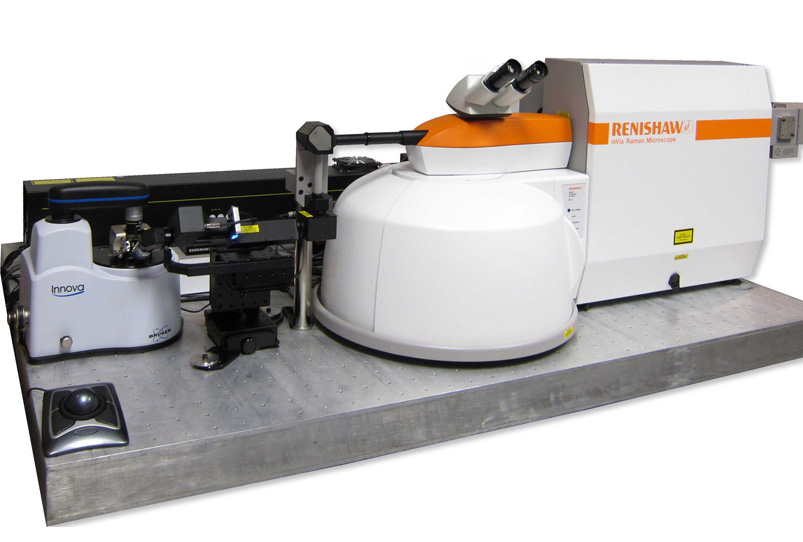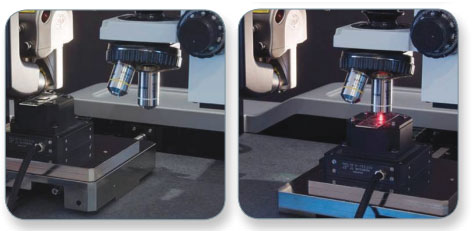New insights that may otherwise remain hidden.


Extend your nanoscale studies by combining Raman microscopy with AFM (Atomic Force Microscopy). The Renishaw inVia integrates perfectly with Bruker AFM for a wealth of nanoscale information to take your material characterisation to a new level – from mechanical to electrical properties to chemical ID or structural information.
Combining these technologies gives you nanometre-scale chemical resolution, and reveals a range of complementary information.
As partners of both Renishaw and Bruker in the Nordic region (Norway, Sweden, Finland and Denmark), Blue Scientific offer the complete, combined system, along with any accessories you need.
New insights that may otherwise remain hidden.
Simultaneous mesurements of exactly the same point.
Both Raman and AFM can be used together or separately.
Save time and achieve better results.
Depending on the AFM you choose, inVia-AFM systems can perform tip enhanced Raman scattering (TERS). This technique uses a sharp plasmonic tip to obtain chemical information at the nanometre scale. TERS mapping particularly complements Renishaw’s StreamLine™ and StreamHR™ technology, giving you the flexibility to study samples at different resolutions:

Left: AFM measurement position
Right: Raman measurement position
The Renishaw inVia integrates with the AFM via a specially designed flexible coupling arm. This uses mirrors to direct light, which is more efficient than fibre optic coupling. Acquire spectra faster, with higher signal-to-noise.
Using an inbuilt video with white light illumination, you can see both the probe tip and the Raman laser spot together, for perfect alignment every time. This is particularly important for TERS. Acquire Raman and AFM data simultaneously from precisely the same point on the sample, without having to move it. This guarantees that your data is consistent, even if your sample changes over time.
While the two technologies are combined in a single instrument, the Raman and AFM systems can also be operated independently by different users, even at the same time. There is no compromise to the performance of either; what you have is:
BlueScientific is also the official distributor for Bruker AFM. The Renishaw inVia integrates seamlessly with these atomic force microscopes:
View all solutions for polymer analysis.
Biomedical, pharmaceuticals, biomaterials and other life science applications.
With Renishaw's new Correlate software module, you can combine results from various microscopy techniques for more powerful data.